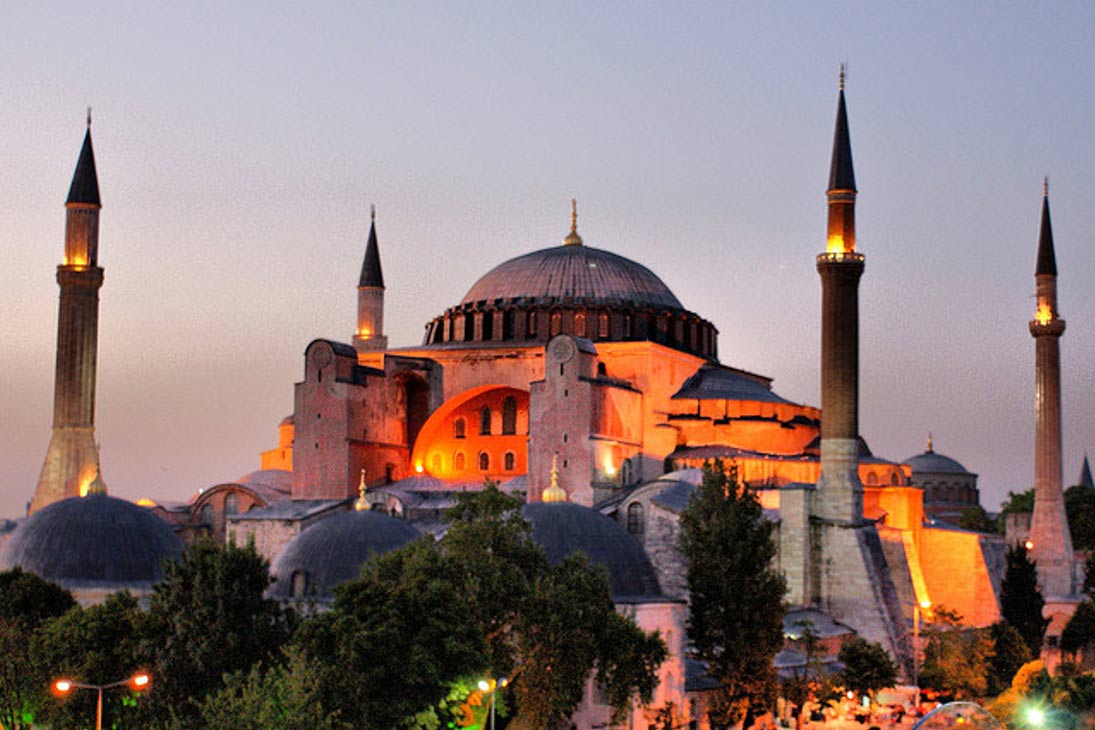Secrets of the Hagia Sophia – Healing Powers, Mysterious Mosaics and Holy Relics

STEVE ANDREWS – http://www.ancient-origins.net/ – May 2015
The Hagia Sophia in Istanbul has a very long history. It has survived earthquakes, religious power struggles, and has been a church (basilica), a mosque and is now a museum. It is known as the Ayasofya in Turkish, and was dedicated to the Wisdom of God, the Logos. There were once two more churches that were regarded as “Churches of Divine Wisdom” but the Hagia Sophia is the last that remains.
The ancient monument is also called the Sancta Sophia, but this name is not associated with Saint Sophia as many mistakenly believe. Rather, its name makes reference to its association with “Divine Wisdom” because “Sophia” means wisdom in Greek.
From the time of its construction between 532 and 537 AD, on the orders of Byzantine Emperor Justinian I, through to 1453 AD, the Hagia Sophia served as a cathedral for the Eastern Orthodox Church. However, Constantinople, as Istanbul was once called, was conquered by the Ottoman Turks at this time, and the Hagia Sophia was converted into a mosque by order of Sultan Mehmed II.
It remained in use as a mosque until as recently as 1931, when it was closed down for four years to be reopened as a museum in 1935 by the first President of Turkey, Mustafa Kemal Ataturk.
Proclaimed by Marlise Simons, writing in the New York Times, to have “changed the history of architecture,” the Hagia Sophia has a truly magnificent dome, and was the largest cathedral in the world for thousands of years. It held this distinction until St Peter’s Basilica in Rome was completed. The Hagia Sophia has provided the architectural inspiration for the Blue Mosque and the Sultan Ahmed Mosque, amongst other buildings.
Earthquakes
Built over a fault line, the Hagia Sophia has been badly damaged by several earthquakes and it has had to be repaired many times. Quakes in August 553 AD and in December 557 AD caused cracks in the main dome, then another earthquake in May 558 AD totally collapsed the dome, as well as destroying other parts of the church, including the altar. Further damage was caused by quakes in January 869 AD and again in October 989 AD. A very great earthquake in Istanbul in 1894 also destroyed parts of the church.
Miraculous Healing Powers
A well in the center of the main hall is said to have the power of curing heart disease and other illnesses. Sufferers must visit the well three times in a row on Saturdays and drink a glass of its water each time. This tradition lasted up until it was opened as a public museum.
The Hagia Sophia also has a mysterious “Perspiring Column,” “Weeping Column “or “Wishing Column” made of marble that stays moist even in the heat of summer. It is believed that this column has the power to cure illness too.

302335 311973Our own chaga mushroom comes with a schokohutige, consistent, charcoal-like arrival, a complete lot of dissimilar to the style of the standard mushroom. Chaga Tincture 71801
144534 153540I dont leave lots of comments on a lot of blogs each week but i felt i had to here. A hard-hitting post. 94082